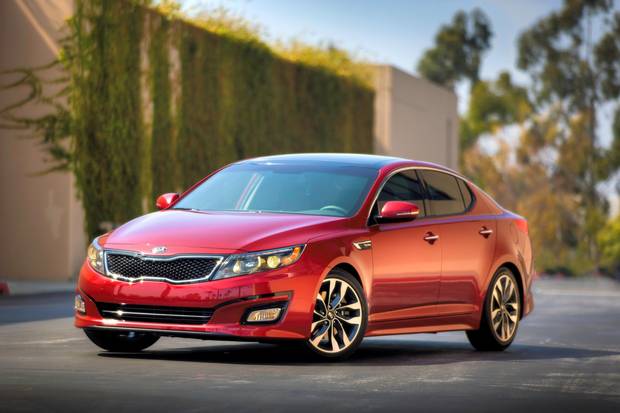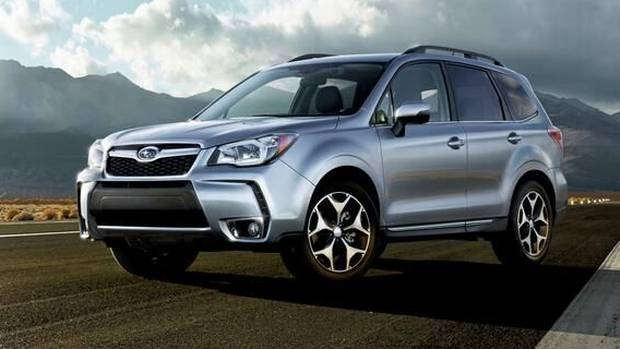I have a 16 year old who just got his licence. I'm trying to find a safe, reliable, newer used car for around $20,000 for him to use to drive himself and his 14-year-old brother to school, soccer and swimming. I never thought I'd be a parent who gets their kids a car, but I need my SUV for work and the transit here is terrible. I just want them to be safe. The scariest part? I remember being that age and speeding like a maniac. Are there any types of cars that are better for teen drivers? – Brian, Ottawa
Cars now are safer than when you were a teen, but teen drivers are still the least safe in them than anybody else.
While fewer teen drivers are fatally injured in road crashes compared to 10 years ago – part of an overall decline in the fatality rate – car crashes are the leading cause of death of people under 24, says the Traffic Injury Research Foundation (TIRF).
And drivers 16-19 are still more likely to be killed in a crash than any other age group. It's scarier still for males – they make up for nearly three-quarters of teen drivers killed.
The stats are scary, and they're why the U.S.-based Insurance Institute for Highway Safety (IIHS) recommends that teens drive cars with a safety rating of "good" in its front, side and head-restraint tests and four out of five stars from the National Highway Transportation Safety Administration (NHTSA).
The IIHS says bigger, heavier vehicles are safer than small cars or minicars, like the Smart fortwo.
"They protect better in a crash, and … analyses of insurance data show that teen drivers are less likely to crash them in the first place." the IIHS says on its website.
But the American Automobile Association (AAA) and Consumer Reports say teens should stay away from big SUVs.
"Large pickups and SUVs are not recommended for young, inexperienced drivers because they are more prone to roll over than other vehicles," Consumer Reports says. "Sports cars increase the risk of speeding and have a higher rate of accidents, and consequently, they carry tuition-sapping insurance premiums."
Your best bet, they say? Mid-size sedans or smaller SUVs.
2015 Chevrolet Malibu
Frenak/GM
Good bets include the Chevy Malibu (Canadian Black Book average price of $17,226 for a 2015), Kia Optima ($16,619 for a 2015) and Subaru Forester ($18,689 for a 2014).
But the size of the vehicle matters less than how well your teen driver fits in it, so they're able to manoeuvre and see properly, says Angelo DiCicco, general manager for Young Drivers of Canada GTA.
"You want to shop for a vehicle that fits you like a good suit," DiCicco says. "You want to look at visibility, the amount of head room and leg room, adjustability for the seat and steering column – those are the things that will keep you in control."
That might mean it's fine for your teen to drive the family minivan, as long as he can see out of it and comfortably reach the pedals and steering wheel.
And while AWD SUVs may be handy to keep from getting stuck on unplowed roads, if your kids are driving downtown, they're harder to fit into tight parking spaces and use more gas than smaller vehicles.

Kia Optima.
Kia
A few more tips for finding a used car that fits your teen:
The newer, the better: Your teen will be able to drive it for longer, experts say. Plus, newer cars tend to have more accident-avoidance features. And make sure it has ABS and VSC (Vehicle Stability Control). "Make sure it's older than 2012, because all vehicles made after that had to have VSC," DiCicco says. "I personally would not consider purchasing a vehicle without it. If it costs you more, it's money well spent, especially for a kid who hasn't had many years of slippery roads."
Make sure it pairs easily to their phones: Yes, they shouldn't be on their phones or even be looking at their phones while driving, but they probably will be. So the car needs to have a hands-free system that your kid will use.
"While it's best to make sure they aren't distracted by phone calls or picking the next song, it's quite unrealistic," DiCicco says. "You want the ability to pair the phone with a handshake when they get in, so they don't have to start fumbling with things while they're driving. Or make sure there's a good place in the car for the phone to be held so they can touch it legally to reroute or call 911."
Safety ratings are important, but: While the IIHS focuses on safety ratings, DiCicco says it's better to make sure your kid can avoid a crash in the first place.
"They don't make bad cars anymore," DiCicco says. "But passive safety devices like airbags and roll cages only help you after the crash has occurred. It's better to avoid a crash by having a better-trained driver who knows how to use the technology available, like VSC and ABS, to swerve and brake at the same time."
Trying to decide on a used car? Send your questions to globedrive@globeandmail.com
Shopping for a new car? Check out the new Globe Drive Build and Price Tool to see the latest discounts, rebates and rates on new cars, trucks and SUVs. Click here to get your price.
